Investor News
We need more renewables?
Last week's Fin Review carried an article ($) by Angela Macdonald-Smith and Mark Ludlow that quoted the Victorian Minister for Energy, Lily D'Ambrosio on the need to replace ageing brown coal-fired power stations with wind and solar generation:
"The real question here is not about how long these [brown coal] generators choose to stay in the market but how much we can continue to rely on their availability when we need them."
This comment was in response to the likelihood of more unplanned outages as the ageing coal power stations become increasingly prone to breaking down on very hot days.
The proposed solution?
Ms D'Ambrosio said it would be "more than important than ever" to bring more renewables into the system to make sure supply was available as coal plants fail more often.
The article went on to quote the opposing view of Federal Energy Minister, Angus Taylor:
"Victoria is pumping renewables into the system at a record rate without a plan to keep the lights on and this is going to end badly and they are looking for someone to blame. They have to take responsibility," Mr Taylor told the Financial Review.
Taylor highlighted the need for investment in reliable power while questioning the 50% renewable energy target:
"Victoria needs to confront the reality and work to invest in firm, dispatchable power, take its moratorium off gas because gas supply is crucial to solve the problem and take its head out of the sand."
Mr Taylor said he would not work with Victoria until it had addressed issues with its energy policy. "Right now Victoria does not have a sensible policy," he said, pointing to its 50 per cent renewables goal by 2030.
So, who's right?
A simple step through the logic answers that quickly.
The Victorian Energy Minister's argument is as follows:
Premise A: electricity generators need to provide power when we need it.
Premise B: brown coal power stations are ageing and prone to more failures.
Conclusion: we need more renewables to back up brown coal if it fails.
Unfortunately, on basic logic alone, the argument fails.
Why?
The State Energy Minister suggests we need to replace generators that operate at this level of reliability:

With generators that operate at this level of reliability:
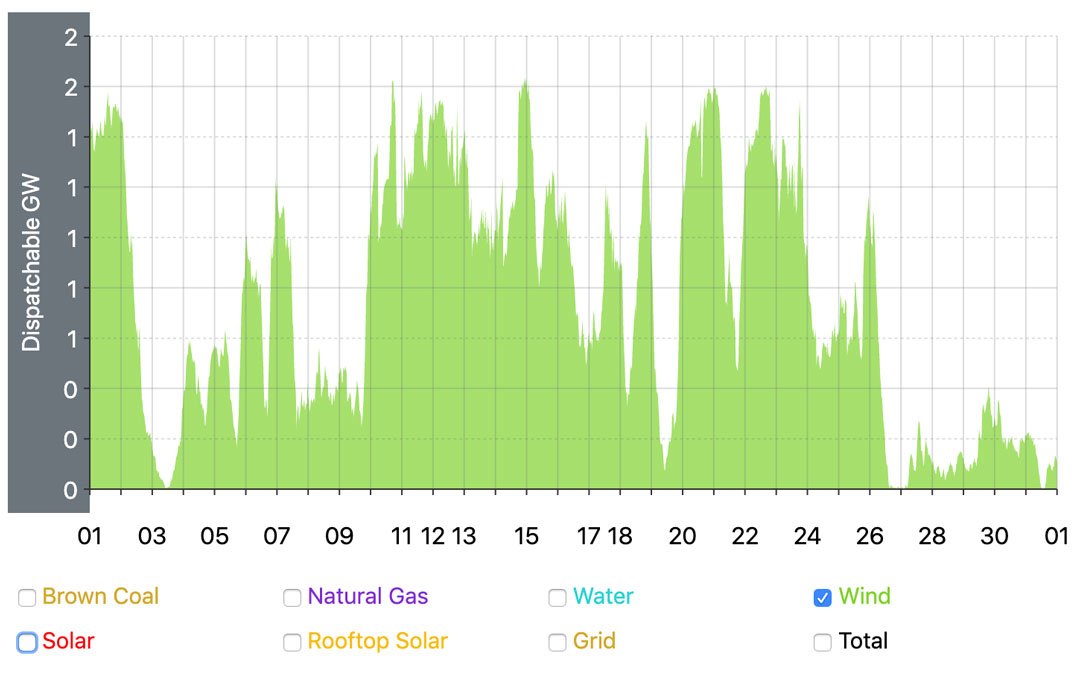
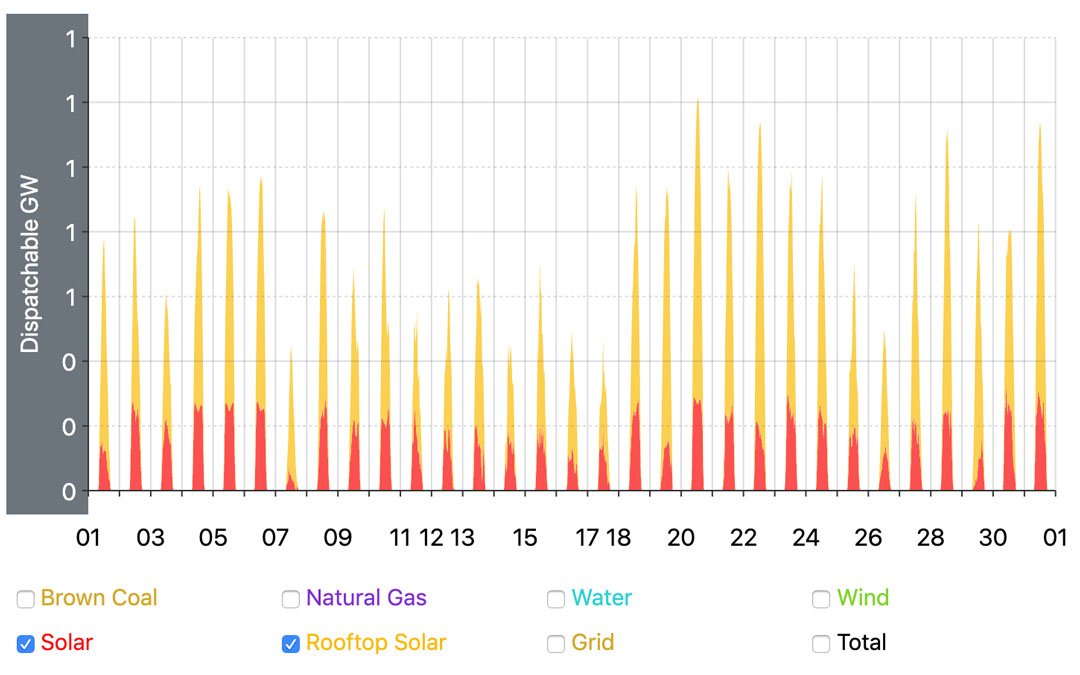
Clearly, intermittent renewable power generation can't replace dispatchable power generation.
By definition, wind and solar are unreliable energy sources. Their performance is governed by how much the wind blows and the sun shines and is in no way tied to demand.
You can make attempts at forecasting, but you take what you get. In fact, this is how the national electricity market (NEM) operates. Wind and solar are taken as an when produced. Brown coal provides the baseload, then gas and hydropower fill any gap to meet demand. Grid-based batteries play a very minor role.
You can't dispatch wind or solar like you can with coal, gas, nuclear or hydropower. Conversely, brown coal is great at providing affordable, reliable baseload, but can't change its output quickly enough to jump in and fill the gaps created when wind and solar suddenly drop off. This is where gas and hydropower come to the fore.
On average wind manages to output about 30% of its installed capacity and solar PV, around 25%. But the range is 0% to 100% for wind and around 0% to 60% for solar.
Our demand curve looks similar to this most of the time:
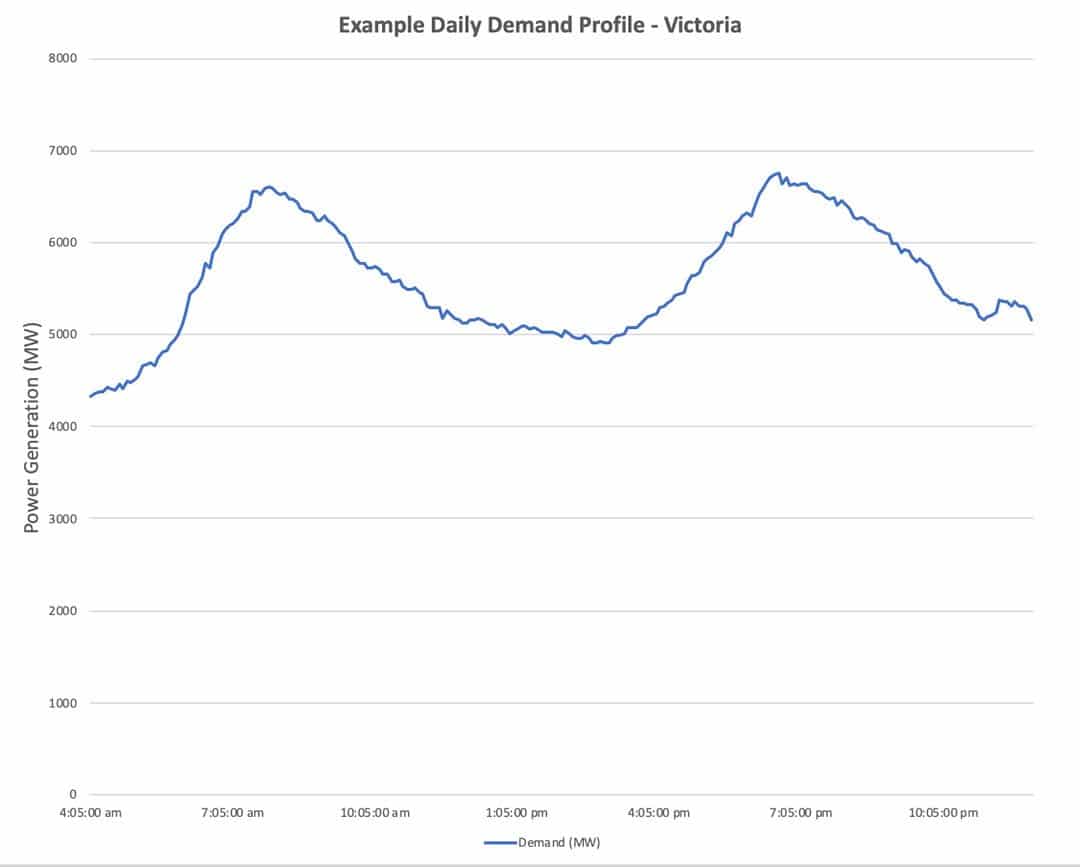
The only way for wind and solar to follow the demand curve is to make them 'dispatchable'.
This is achieved by adding backup generation such as natural gas or via storage methods such as batteries or pumped hydro.
A recent study titled Storage Requirements and Costs of Shaping Renewable Energy Toward Grid Decarbonization by Ziegler et al. concluded:
- Solar and wind energy can help to decarbonise electricity production but require other technologies, such as energy storage, to reliably meet demand
- In high- resource regions (windy & sunny), with optimal resource mixes, low storage energy capacity costs (<$20/kWh) are necessary for cost-competitive, reliable baseload electricity generation
It was silent on current storage costs, leaving the reader to find that out on their own. Luckily, a recent benchmarking study in the US put the cost at over $200/kWh.
Generators need to provide electricity when required (supply should meet demand). Wind and solar can't do this without back up or storage (at significant additional cost). So, what is the logical basis for concluding that we need more renewables?
The answer is, of course, that renewables with firming could replace brown coal. The question then is cost.
Not just for the backup and storage, but for additional network infrastructure.
A 2013 AEMO report modelled what it may take to go 100% renewable power, highlighting the need for a capacity of roughly double maximum demand due to the intermittent nature of wind and solar and the need to generate excess power to charge batteries or fill dams. The report also highlighted the need for significant additional biomass backup generation.
Further, the report noted the generation mix consists of three categories of generation technologies and that all three categories must be optimally combined to reliably meet supply for the lowest cost.
The categories are:
- Non-dispatchable (solar, wind, and wave): variable, weather-dependent, low operating cost technologies where output to some extent can be forecast ahead of time but not increased on demand. However, output can be decreased (curtailed) for operational reasons if required.
- Baseload (geothermal, biomass (wood), bagasse): technologies where output can be controlled, but which are relatively slow to respond and/or have high capital and fixed costs but low variable costs. These are best suited to operating almost continuously at close to their maximum output, with some variability to match demand.
- Peak dispatchable (hydro, pumped hydro, CST, biogas): flexible, fast-to-respond technologies which are typically more expensive, and either have limited annual energy potential or require daily recharge of energy storage.
In the modelling, biomass (wood) and bagasse plants are assumed to operate continuously at 70–80% capacity, rising up to 100% if demand is high.
The report estimated the wholesale cost of electricity would rise from $55 MWh (2012) to between $111 and $133 MWh.
Given the wholesale electricity price in Victoria has already risen to $109.91 (2018), it appears the cost of increased renewable power is understated.
With the above in mind, let's take a look at demand and production in Victoria.
The following chart shows Victorian electricity production by source for a typical July (2019) day.
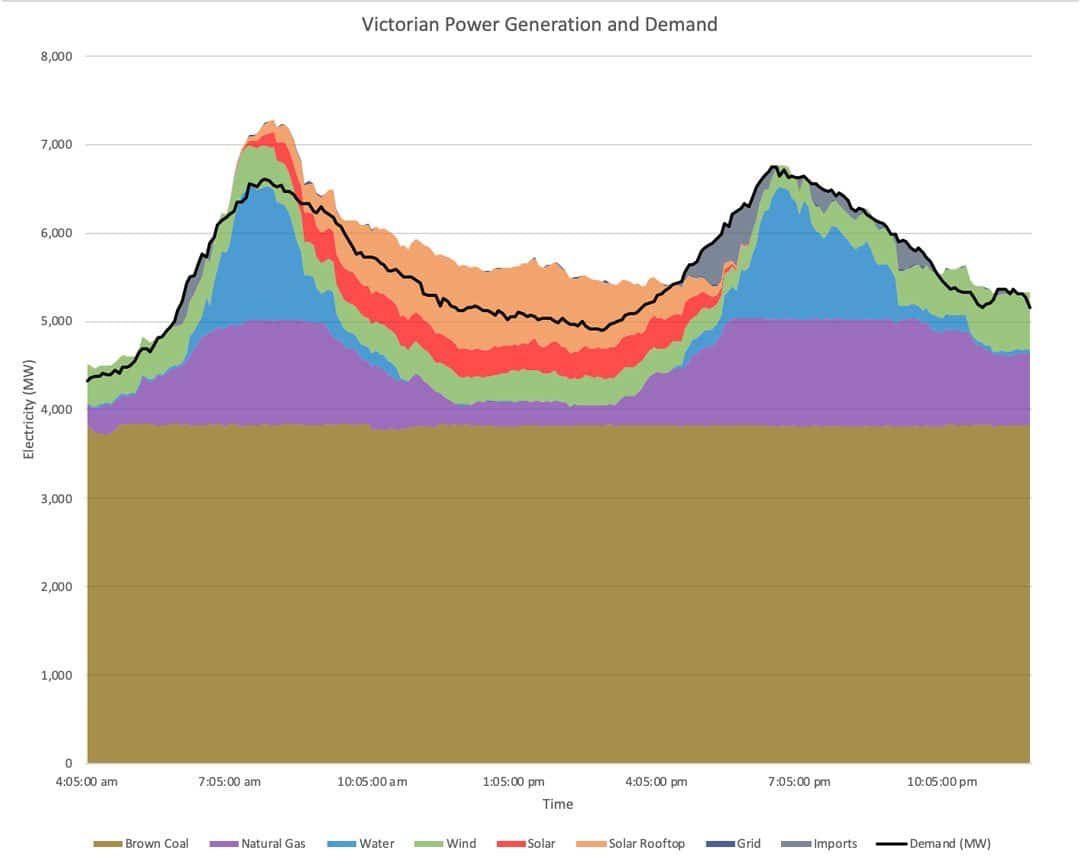
A quick explainer:
- The black line represents demand (how much electricity we 'need')
- Where generation exceeds demand, the electricity is exported to other states (generation above the black line)
- The grey area represents imports from other states (this can be because of lack of generation or simply a cheaper price)
- The dark blue area represents battery-sourced electricity (don't bother looking for it, it's barely visible due to the minuscule amount)
The chart shows brown coal performing its baseload function (two generators we're offline for scheduled maintenance). The NEM prioritises grid-based wind and solar power generation, represented by green and red areas. Filling in the gap is dispatchable hydropower (blue) and natural gas (purple).
Given the curved nature of the chart, it can be hard to visually discern how wind and solar are performing in relation to their ability to deliver electricity when we need it. We need to isolate each and compare their output curve against the demand curve.
Here's the wind power profile:
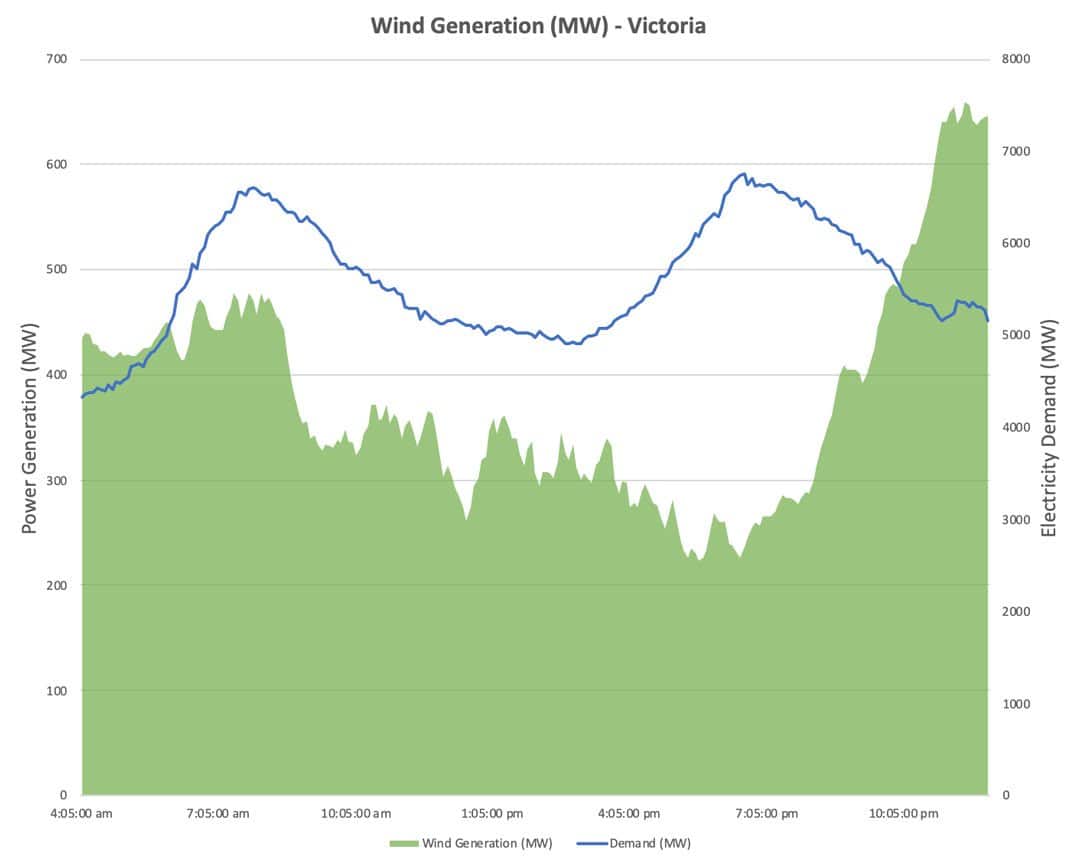
Installed wind capacity (May 2019) is ~1,963MW. During the period from 4 am to midnight output ranged from 223MW (11% of capacity) to 660MW (34% of capacity), representing an average 19% of installed capacity.
Here's an example of the solar power profile (both grid and rooftop) during July:
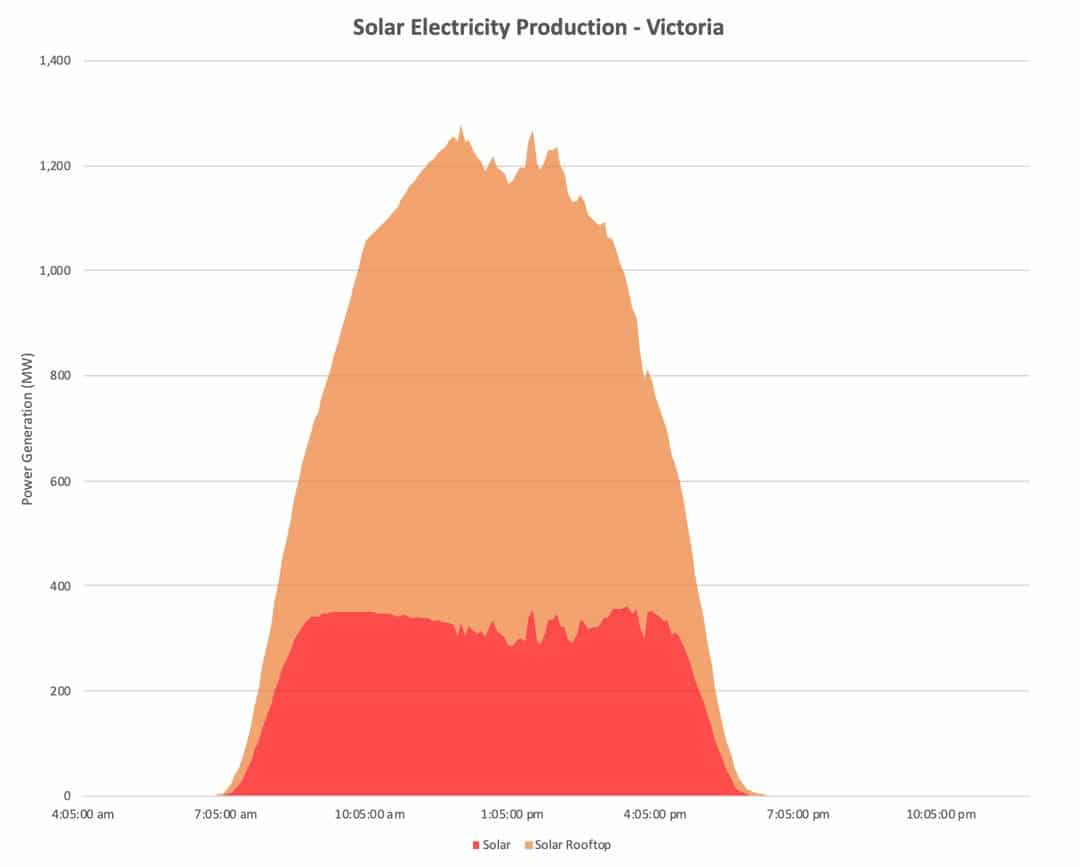
The takeaway:
- Wind power fails to track the demand profile most of the time. Volatility is high over short timeframes with swings in output of up to 33% over 30-minute timeframes. We cannot rely on the availability of wind power when we need it.
- Solar, while less volatile over shorter timeframes, still sees sudden losses in output due to cloud cover. Solar is also unable to deliver electricity when we need it most, during the morning and evening peaks.
Brown coal power generators provide reliable, affordable baseload.
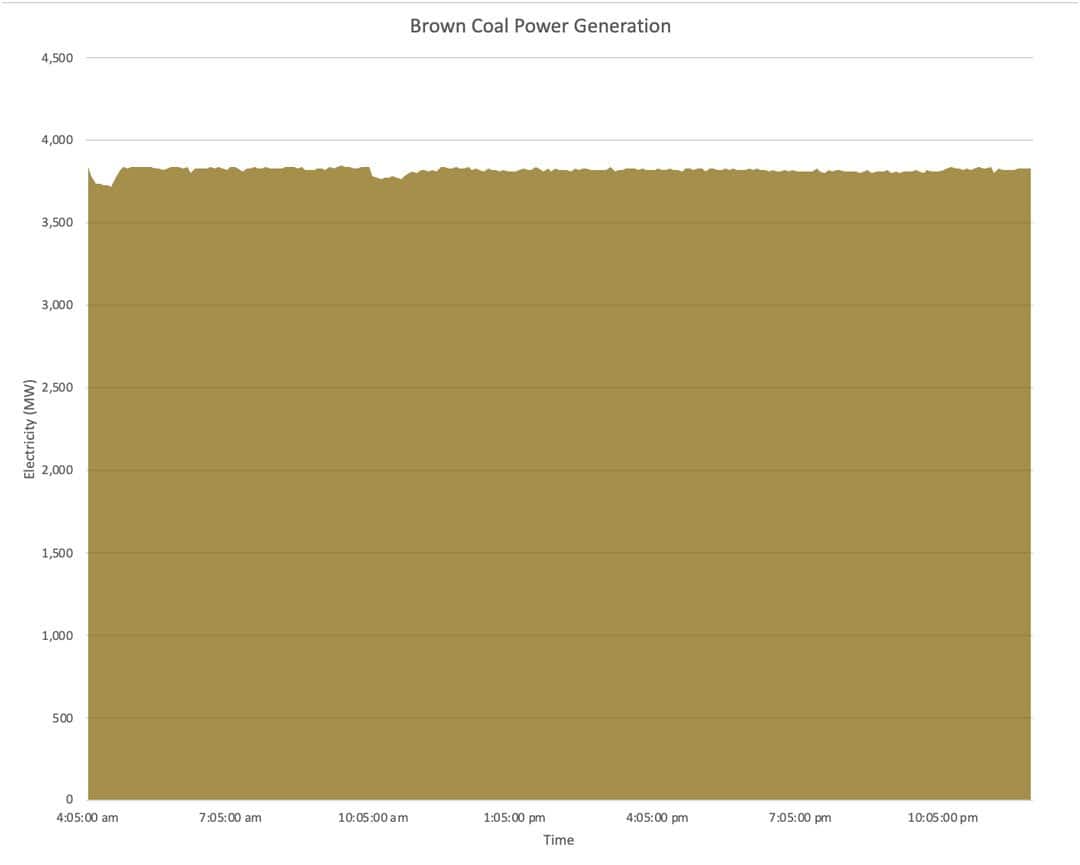
At times of peak demand, we need generation capable of responding quickly to fill the gap. This is where dispatchable natural gas and hydropower come in.
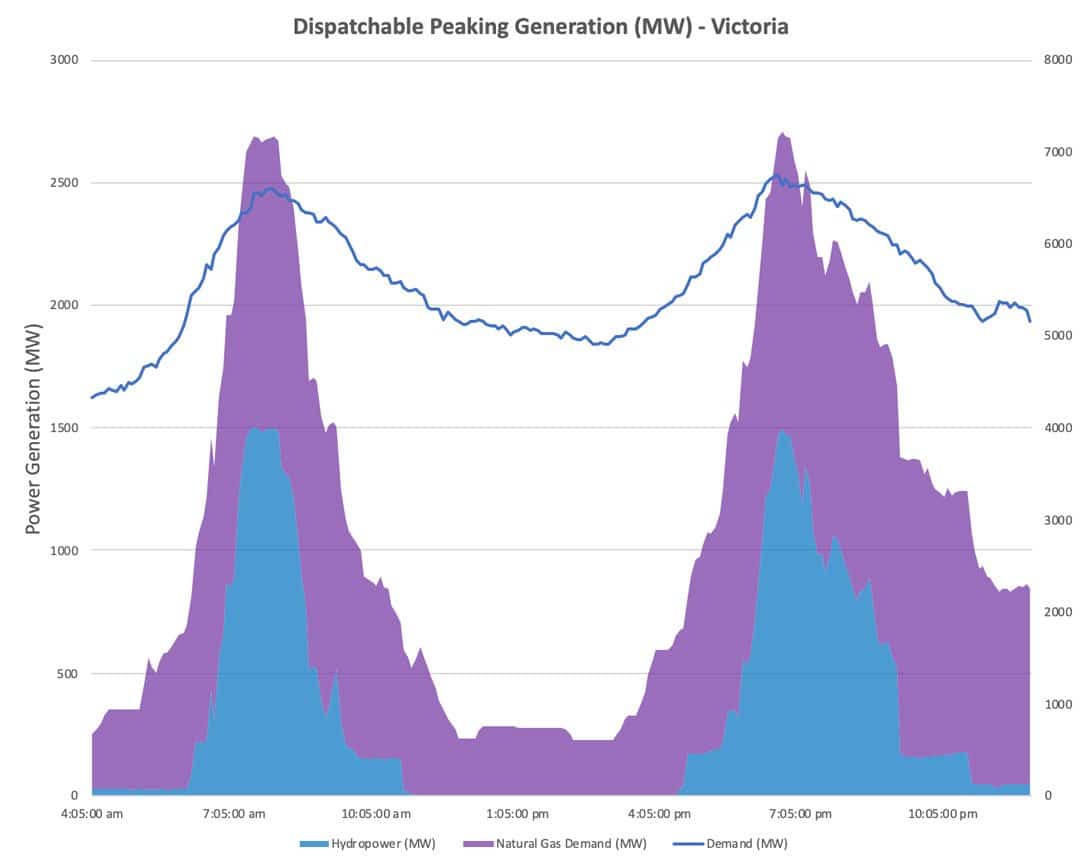
Unfortunately, gas has more than double in price in recent years, contributing to the increased wholesale cost of electricity as it's used to firm intermittent wind and solar.
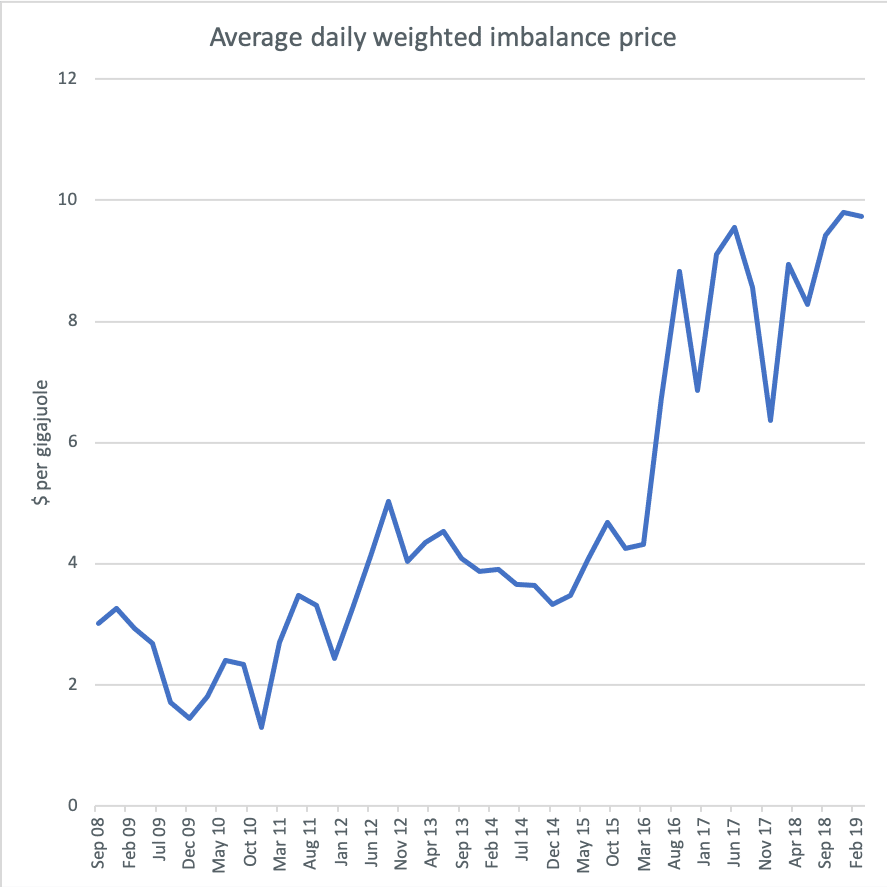
Unless gas prices come down, further electricity price rises can be expected as it's increasingly relied upon to 'firm' wind and solar.
Hydro is an ideal dispatchable renewable generator, but it is limited by geography and rainfall.
Brown coal provides reliable, affordable baseload. Natural gas and hydropower fill the gap caused by intermittent wind and solar.
Perversely, the very reason we can't rely on wind and solar to provide electricity when we need it also means they distort the market (and viability of coal and gas generators) when they are generating electricity at times we don't need it.
The rapid introduction of renewable energy into the National Electricity Market has contributed to increasingly volatile prices for wholesale power, with prices sometimes plunging towards zero or below on sunny and windy days with low demand.
The answer?
There's no silver bullet, but it's clear that any approach must restore reliability and affordability.
The skyrocketing wholesale electricity price and falling reliability must be addressed.
All options need to be on the table and assessments need to be transparent, technology-neutral, unbiased and inclusive of all costs directly related to a particular technology's deployment.
Under such a rational approach we believe Coldry-enabled HELE power stations could replace retiring brown coal power stations, helping balance affordability, reliability and emissions intensity.
In the meantime, we should be critical of claims that wind and solar can replace brown coal in Victoria... at least, not without significant cost increases to pay for backup, storage and transmission.